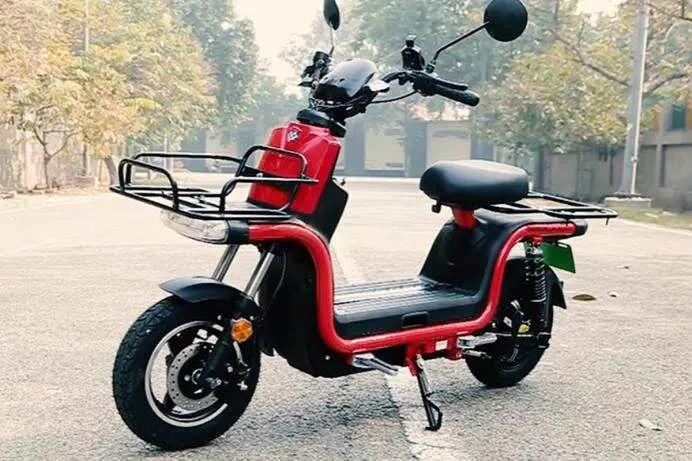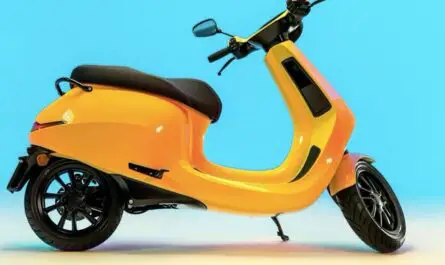You have just taken delivery of your brand new scooter. You've looked at the owner's manual, listened to your friends, and heard and read a lot of confusing information about the proper way to break in a new scooter engine. Here is an article that explains how to do a good break-in for your scooter.
Why break in your scooter?
A few years ago, the processes of molding and manufacturing scooters involved more variability in the components and the way they were put together. If we move on to today's high-tech, computer-controlled systems, we see that the parts are now uniform and that their assembly is very precise. This doesn't guarantee that things can't go wrong, but modern production methods make new engine failures rare now. However, that doesn't mean you have to get on your new scooter and ride it as hard and as fast as possible. Some people do and swear it makes their scooter faster and has absolutely no downside. We do not recommend this, as all engine components need a break-in period before they start to run full speed.
The valves, cylinder bore, and piston rings in a new engine all need time to wear out in order to properly adapt to the surfaces in which they interact. If the valves do not seat properly on the cylinder head combustion chamber, the engine can lose compression and combustion. This can cause exhaust gas to leak, causing loss of power and compromising the engine reliability and longevity.
Option one: Follow the manufacturer's recommendations
In general, most manufacturers suggest not to use full throttle for the first 800 kilometers and to avoid high revs at all times. You should also avoid starts and sudden stops, except in an emergency. Do not over-rev when cold and do not accelerate the engine. Always downshift before the engine starts to toil.
We do not recommend, as some suggest, driving a new scooter at a constant speed for long periods of time. We believe it's best to use the entire rev range, including short intervals of high revs. One of the worst things you can do to a new engine is to be too careful with it, but you also shouldn't be spinning it so hard that it bounces off the rev limiter. There is a happy medium between the two, which is most effective for breaking in a new engine.
Second option: Make a break-in according to your requirements
The second method to consider is a little less rigid than that recommended by the manufacturers. If you live near a canyon or a racetrack, these are two great places to break in a new scooter engine. First of all, never drag the engine at low speed and do not run at the same speed for long periods of time. You need to vary engine rpm and speed constantly. It is probably best not to drive on the freeway for the first half a mile, as more often than not you will be riding at constant speed and revs for long periods of time, which is not good for a new engine.
For the first 800 kilometers, you should use conventional mineral oil in the engine, with SAE 10W-40 being the best option. If you are not sure what oil is in your new scooter, change it and replace the filter as well. You can switch to synthetic oil after 1 km.
What you will need:
Advice to follow during break-in: of your scooter
- After 15 km, stop the scooter and switch off the engine. Let it sit for 20 minutes and then restart it. Keep riding as you have done so far, varying the engine rpm from the low to medium range, but this time increase the rpm to 8500 rpm and try to use the engine brake as much as you can. possible.
- Some people recommend changing the oil in a new scooter after the first 30 km trip. Then again after 80 km and after 200 km. You can choose to do so. There is nothing wrong with doing it, but it is time consuming and expensive. The most important point is to change the oil and filter of a new scooter at 500 km.
- During the break-in process, you should try to follow what you did on the first ride, but increasing the number of kilometers traveled, stopping briefly between each ride, and each time adding 1000 revolutions per minute to the speed. speed range, and above all by constantly varying the engine speed and speed.
- After 800 km, you should change the oil and filter when the engine is still warm, but not hot. Inspect the oil for any metal debris. Don't worry if there is some metal glitter, it is totally normal. Once you have passed the 800 km mark, you can start driving on the highway, while continuing to ride on the road.
- At 1500 miles, change the oil and filter again. You can choose to use a good quality synthetic oil suitable for your engine and the climatic conditions in your area or, if you prefer, stick to mineral oil. It is at this point that your new engine is considered to have broken-in. Now get out there and ride your scooter.
What you will need:
Learn more about your scooters:
Here is an article that serves as a guide and helps you choose your scooter better before purchasing. For this, we give you the details on the characteristics and the different types of scooter.




